The Machine Intelligence 3.0 landscape above was created by Shivon Zilis and James Cham.
This is Part 5 of a 5-part series on 5 Disruptions to Marketing (you can start with Part 1, Part 2, Part 3, and Part 4 if you haven’t already):
- Digital transformation redefines “marketing” beyond the marketing department.
- Microservices & APIs (and open source) form the fabric of marketing infrastructure.
- Vertical competition presents a greater strategic threat than horizontal competition.
- AR, MR, VR, IoT, wearables, conversational interfaces, etc. give us digital everything.
- Artificial intelligence multiplies the operational complexity of marketing & business.
5. ARTIFICIAL INTELLIGENCE
Because I’m allergic to hype, I expected to be itching incessantly while writing this. “Artificial intelligence” (AI) is one of those overly broad terms that has rocketed to buzzword mania in marketing circles this year. Whatever problem you need to solve or marketing fantasy you’d like to indulge, there’s someone telling (selling) you that the answer is AI.
It’s bigger than big data was at this stage of its hype cycle (although, as we’ll see, the two are closely related).
But the truth is that AI is already having a significant impact on marketing. And over the next several years, it will dramatically reshape the nature of business and marketing — no hype. But not necessarily in the way some people promise.
First, let me sidestep the difference between artificial intelligence, machine learning, cognitive computing, machine intelligence, and so on. While each of these terms has a slightly different meaning, (a) there’s tremendous overlap between them and (b) even the leading researchers in these disciplines argue over their boundaries.
For our purposes of considering the disruption this will all bring to marketing, the distinctions between these variants are inconsequential. We can lump it all together as “AI” with a loosey-goosey definition of “machines doing cognitive tasks that we used to believe only humans could do, but doing them better and faster than us.” (The AI effect is an amusing observation by researchers that “AI is whatever hasn’t been done yet” in their field.)
I like the way analyst/rockstar R Ray Wang frames the kinds of outcomes AI can deliver:
Also, if you’re wondering “why now?” — after decades of AI talk that never amounted to much, why is it suddenly taking over the world today? — the short answer is the exponential growth of cheap, fast, scalable, and interconnected computing and storage in the cloud. The horsepower and data to efficiently run AI aglorithms is now within reach of everyone.
The next question that I personally hear in martech circles is, “Will there be an AI category on the next marketing technology landscape?” Possibly, but probably not.
Why? Because AI is being embedded across almost every product category in marketing technology. Yes, there are many pure AI platforms. But like big data platforms or cloud computing, most of them are general purpose technologies simply being harnessed in the service of marketing — often under the covers of a more marketing-specific application.
For instance, IBM Watson is probably the best-known AI platform today. But for marketers, it’s much more interesting to look at a product such as Equals 3 that leverages Watson behind the scenes to deliver market research, customer segmentation, and media planning services, all tailored to marketing’s exact needs.
Several of the major marketing platforms have created umbrella AI initiatives that are intended to span their portfolios of products, most notably:
- Salesforce — Einstein
- Adobe — Sensei
- Oracle — Adaptive Intelligent Apps
For instance, you can see in this slide from Salesforce some of the many ways that they intend to apply Einstein in specific products of theirs:
But does this mean that smaller martech vendors are going to be shut out of this AI wave of the industry? Will AI be the catalyst that finally forces the long predicted consolidation of the marketing technology landscape? Maybe, but I doubt it.
In fact, you can see from this chart that master-martech-analyst David Raab shared at the last MarTech confernece in San Francisco that AI (machine intelligence) is blossoming across the whole industry with vendors of all sizes (and this is only a partial list today):
How are all these companies competing with the “giants?” In some cases, they have their own specialized AI technology. But thanks to the system dynamics of building software today, many are also able to leverage great open source machine learning projects — such as TensorFlow, PredictionIO, Caffe, Vowpal Wabbit, and scikit-learn — to build sophisticated AI features into their software by standing on the shoulders of giants. (For “free.”)
Want an even easier way to plug in machine learning capabilities into your product? There’s now a bevy of machine-learning-as-a-service (MLaaS) offerings available, such as:
- Amazon AI
- Google Cloud Machine Learning Platform
- Microsoft Machine Learning Studio
- BigML
- DataRobot
- Algorithms.io
- Datoin
This naturally reinforces the drive towards microservices & APIs. The software capabilities that are now available on-demand in a “service” fashion are incredible. These can and will be used by martech vendors, of course, to stay competitive in the AI era.
Important to note: these open market AI engines can also be used directly by brands as well, incorporated into any company’s digital products and customer touchpoints — which brings us full circle back to digital transformation. (Another moment to reflect on how all these 5 disruptions fit together.)
However, because so many core AI algorithms are essentially commoditized by these open market options, they cease to be a source of competitive advantage by themselves. Instead, strategic advantage with plug-and-play AI is achieved by other means, particularly these two:
- Data. The specific data you feed these algorithms makes all the difference. The strategic battles with AI will be won by the scale, quality, relevance, and uniqueness of your data. Data quality will become ever more important — as will services and software to support that mission. Markets for accurate and timely 2nd-party and 3rd-party data will thrive, available on-demand via APIs. AI finally puts big data to good use.
- User Interface (UI). AI can be used to create significantly better user experiences with your digital products and services, from predictive features that anticipate what a user will want in a particular context to natural language interfaces — text and voice-based chatbots — that can bypass arcane menu-driven interfaces. The opportunity for AI-UIs to make previously complicated tasks fast and easy is enormous — especially in business applications where we can often state what we want to know or do much more easily than we can figure out how to manually get the $#&!% software to do it for us. (Think of all the multi-month certification courses for enterprise software that have been a barrier to “regular” folks unlocking value from those systems.)
These factors are likely to be the sources of disruption among martech vendors. Which ones will be able to corner the market on particularly valuable data or combinations of data (see: vertical competition and digital everything)? Which ones will be able to agilely adapt their software to take advantage of new sources of data and alternate UI paradigms?
VC Mark Suster eloquently described this opportunity/threat around conversational interfaces in a recent post, The Coming Shift in Enterprise Software:
For example, on voice you can either stick to a defined set of commands for asking questions and thus the users must have heavy training, or you can learn from past queries and intelligently adapt the system to look up information and deliver results. You might want to ask, “What is the Q3 sales forecast for the central region?” or “Who is the budget holder on our Dupont sales campaign?” or “Please list all of my teammates who have had communications with Verizon in the past 90 days.”
On chat — the key for enterprise is getting teams of people to collaborate and to do so you can’t rely on everybody logging into a system. You need to pull them in on their mobile devices with notifications if you want timely responses. But the chat needs a “bot” that can offer intelligent support. So a text query that says, “What is Karthick Sharma’s title” or “How much did we close with Verizon last year?” can receive instant, accurate response without requiring human intervention — critical for teams in the field.
This isn’t hypothetical. For example, as I was writing this, the marketing data software company Datorama released its “Ask Datorama Anything” app that plugs into Amazon Alexa. This new wave of martech AI-UIs will definitely shake up the existing marketing technology landscape.
But what makes AI a disruption to marketing more broadly?
Here’s where my assessment diverges from popular opinion. I don’t believe that AI will simplify marketing. Instead, I think AI will exponentially increase the complexity of marketing (and business in general) in extremely disruptive ways.
To be sure, AI will significantly simplify the user experience for many of the martech tools that marketers use, as well as automate a tremendous amount of the “manual” labor associated with marketing programs today.
But it’s unlikely that we’ll be lounging around while robots feed us grapes.
The time we recover from AI assistance will be reallocated in search of a further competitive edge. We may engage in more activities that machines aren’t yet good at. Or, we may launch even more automated tasks, because the marginal effort to initiate and control additional algorithmic agents will be small (but not zero). We will work as hard as we do now, but our efforts will be amplified by AI services working on our behalf.
For instance, consider marketing automation campaigns designed to serve different customer segments at different trigger points.
Up until now, the complexity of such campaigns was constrained by our limitations as humans. We could only keep track of so many rules, for so many segments, at so many trigger points before it became an unmanageable tangled mess.
But AI-powered marketing automation will have no such constraints. Machines will calculate thousands of microsegments and microtriggers, dynamically adjusting their own internal “rules” for optimizing engagement.
Again, this is not hypothetical. For one example, check out the AI-powered marketing optimization product Amplero, which boasts continuous testing of 1,000’s of marketing permutations through multi-armed bandit experiments.
This creates orders of magnitude greater complexity in marketing’s overall “system” — albeit most of it invisible to human marketers.
If we consider the net “complexity” of a complex system to be a function of the number of independent agents interacting with each other, we have to recognize that all these AI-powered operators are effectively little independent agents. They don’t work in a vacuum. They will react to feedback in their environment from both humans and other AI agents. (David Raab has an excellent couple of posts on that latter scenario in the context of device-to-device interactions: Do Self-Driving Cars Pick Their Own Gas Stations? and More on Marketing to Things.)
And it won’t just be interactions from multiple AI agents within our own company. Competitors will leverage AIs against us. Customers will wield AIs to optimize their interests. Other industry third-parties will have AIs operating out in the market on their behalf. The entanglement of all these agents will explode marketing complexity.
You might ask, “But if that complexity is invisible to us, should we care?”
However, even if we can’t see this complexity, it is actually there — and it will have a material effect on our business. The more black boxes our organization depends on — interconnected to each other in numerous direct and indirect ways — the less understanding and control we have over the system as a whole. We incur risks of small algorithmic “hiccups” in customer experiences that may also be invisible to us (but affect our brand, nonetheless!), as well as more catastrophic black swan events, where badly interacting AIs spiral into a vicious circle.
Issues encountered with algorithmic trading give us some sense as to how these things can go wrong — and financial markets are far more controlled than the infinite expanse of customer experience.
Of course, this doesn’t mean that we should — or even can — avoid AI. It will be a tremendous source of competitive advantage. But we must acknowledge that marketing in the AI era will have very different dynamics than the manually operated digital marketing of the past decade.
To prepare for AI-powered marketing, marketers should:
- Assure that data is accessible from all marketing systems and touchpoints and consider building a centralized data lake (there’s a great book and blog series from Franz Aman of Informatica on building a marketing data lake in particular). This big data will be the fuel that feeds AI engines.
- Invest in data quality initiatives, especially for core customer data. An important element here is matching customer identity across as many touchpoints as possible, which faces both technical and regulatory challenges. Here’s a great overview of cross-device identity matching (part 1 and part 2) by Martin Kihn of Gartner — but expect this to get way more complicated with digital everything.
- Learn about system dynamics as an approach to understanding and managing the complexity of this new environment — especially as AI algorithms accelerate the speed by which feedback loops operate and grow at the fascinating intersection of technology and human domains.
- Build governance models for dealing with algorithmic marketing: what to automate, what to semi-automate, what not to automate; human checks and balances; anomaly detection (check out Anodot) and event escalation procedures; “circuit breakers” to stop feedback loops from spiraling out of control; and orchestrating this in the context of overall digital transformation — not just marketing. A chief AI officer role might be worth considering.
- Evaluate marketing technology vendors through the lens of AI. Are they adopting AI features or AI-UI capabilities to simplify the marketer’s experience? Are they integrating with a larger ecosystem that could leverage their data or execution channels for AI-powered analysis and automation? How agile and adaptable are they to emerging AI opportunities? Have vendors explain their AI support with clear examples — and the caveats on which their models rest (e.g., data of a certain kind and quality).
Conclusion
I hope this series of 5 disruptions to “marketing” has been helpful to you, and you see how they all interconnect. Unfortunately, I am not able to give you a simple checklist of paint-by-number solutions (“do these 10 things to win the Nobel Prize for Marketing in 2017”). These are hard challenges, and the seismic shifts driving these disruptions are still moving wildly underneath our feet.
But they are also incredible opportunities. Disruptions are inflection points in the market, where the status quo is threatened and the future is up for grabs. Will you be one to seize it?
If you found this article relevant, you should plan to attend the MarTech conference series, where leading practitioners and experts share their experiences and insights at the evolving intersection of marketing, technology, and management.
Here are 2 talks on AI from MarTech earlier this year that gave attendees an early view of what to expect.
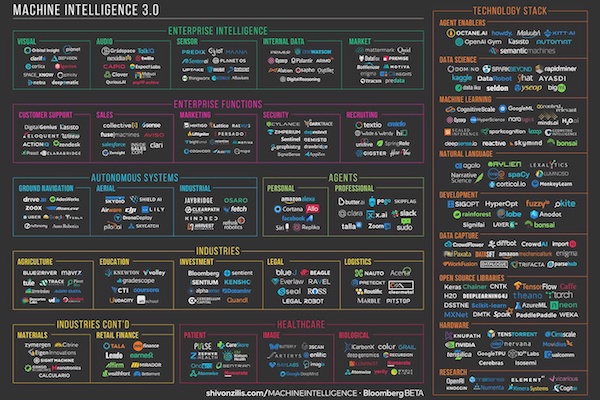
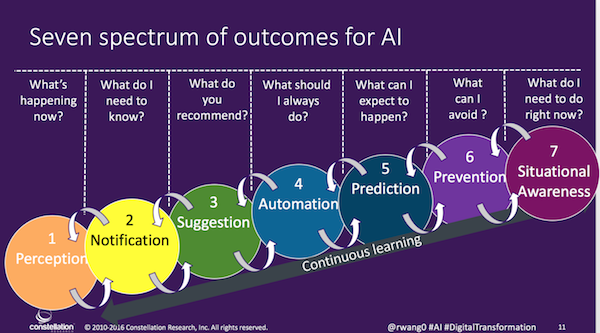

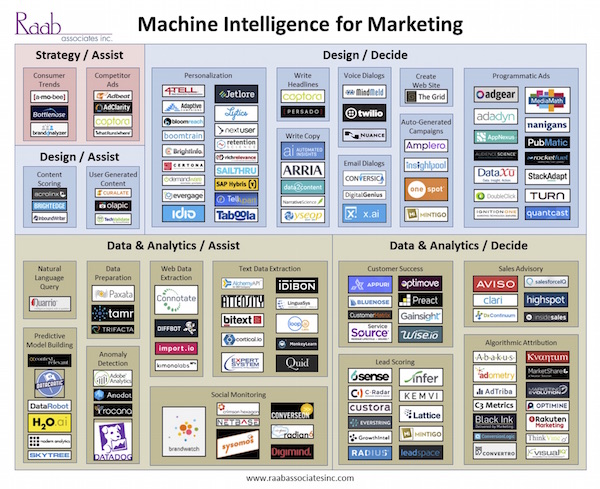
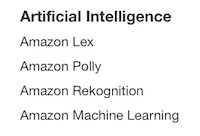
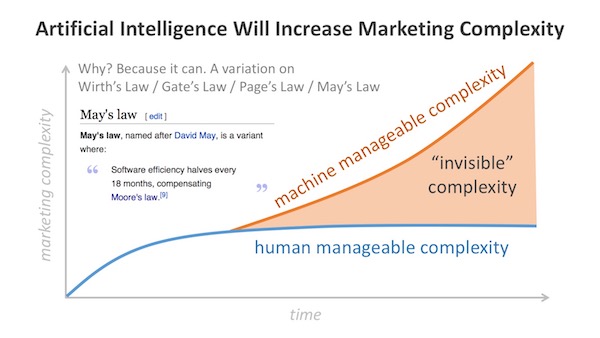



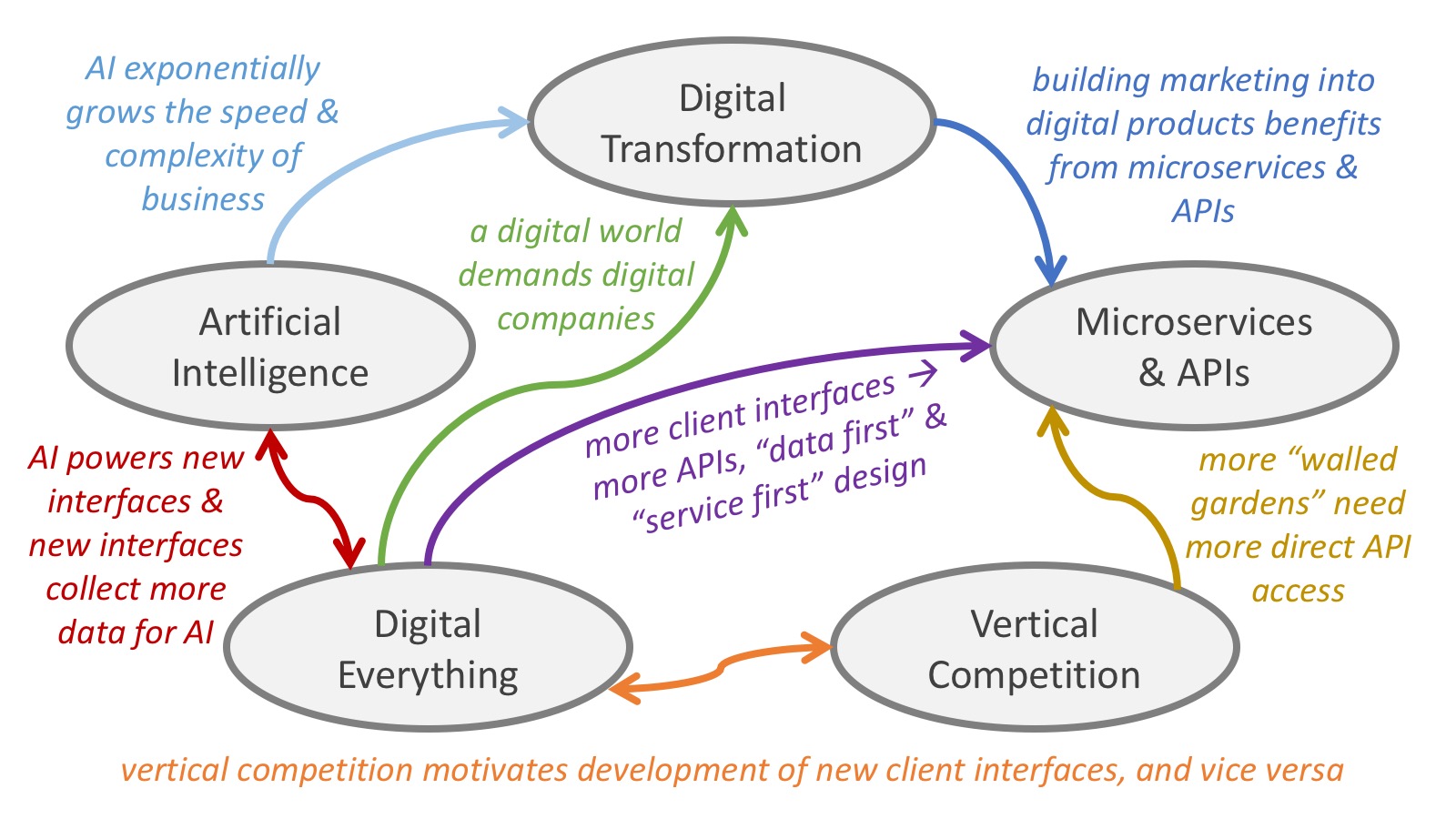



As always, Scott, right on. I’d like to add one more item to the list of competitive differentiators in this new AI world – creativity. It takes enormous creativity to understand a business problem, frame that problem quantitatively, choose variables that approximate the conditions you want to model, transform/stage data for analysis, and evaluate. Marketing is definitely getting more complex and great marketers will have understanding of all the above to lead teams using AI. Those that can create and adapt their models to changing conditions will have the advantage. No more set it and forget it, in my opinion.
Inboundwriter has permanently closed.